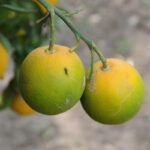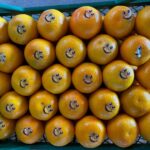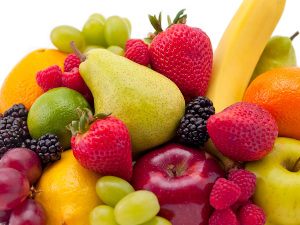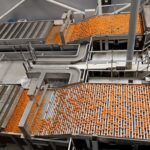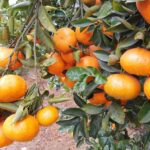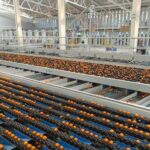HLB might not be the main cause of citrus fruit drop

For many years, Florida's citrus industry has focused on taming Huanglongbing (HLB or citrus greening), a disease well-known by farmers in the state that affects citrus trees in various ways, including causing premature fruit drop.
However, new research sponsored by the European Union and KeyPlex at the University of Torino in Italy found that Colletotrichum gloeosporioides, and other fungal pathogens, are playing a major role in Floridian citrus fruit drop.
FreshFruitPortal.com spoke with Gerald O'Connor, CEO of KeyPlex, about the organization's decision to focus on new research.
Florida-based KeyPlex currently operates in more than 16 countries, focusing on plant nutrition, biocontrols, and oil-based botanical research.
O'Connor said he was introduced to the research while reading an article by Dr. Vladimiro Guarnaccia, an associate professor of plant pathology at the University of Torino.
Guarnaccia is a lead researcher on this project and conducted an 11-year study to uncover new solutions to help citrus growers manage fruit drop.
"And so I thought, what happens if we've been looking in the wrong area? I wanted to think outside the box and take a different macro view of it," O'Connor said.
"So, when I saw Vladimiro do all this research across the Mediterranean where there is no HLB, and they're having the same problem, maybe it's not HLB, maybe is Colletotrichum."
O'connor contacted Vladimiro, and along with the European Trade Commission, they set up a research project two years ago where they decided to pull samples from Florida trees and send the DNA off to the University of Torino to identify if these pathogens might have some skin in the game.
After two years, O'Connor explained, the research showed that the majority of the fruit drop is caused by Colletotrichum gloeosporioides var. cingulata.
During the research, various symptom complexes were observed on all citrus accessions in the fields at various times.
These included early fruit drop, Alternaria brown spot on fruit and leaves, anthracnose on leaves and fruit, pre-harvest fruit drop, twig dieback, and defoliation.
"What happens is it sits underneath the peduncle early on, and in Florida, we have high humidity, rains, and high heat," he explains. "So, right about a month or two before picking, the glomerella cingulata explodes and causes a brown ring around the fruit, which then drops."
O'Connor added that in the four locations they studied in Florida, other factors are affecting the twig dieback but it's the actual Colletotrichum gloeosporioides that's causing, or affecting, the fruit drop.
"In the four locations we studied, it was overwhelming the amount of data that proved that the cause is Colletotrichum glomerella.
When asked if there's a solution for premature drop, O'Connor said a swift yes, but clarified that the solution will take time.
"For HLB they're using trunk injection, and that seems to be effective," he assured. "But, we need to figure out what the solution is and the work that we did in Italy doesn't allow us to look at an in-depth view of what fungicide we could use to control it."
He said he would direct government institutions to look at different fungicides to control Colletotrichum gloeosporioides and glomerella.
"The next step would be doing some research about what fungicides might be able to cure it and control it, that's the real focus point of the next part of the research."
KeyPlex has scheduled a citrus symposium for July 25 at the SEVEN Sebring Raceway Hotel to present the research's findings and evidence to members of the citrus industry.
The United States is one of the largest world citrus producers, after China and Brazil, with an economic value of USD 2.91 billion, with California, Florida, Arizona, and Texas representing the main areas.
According to the research, "Florida citrus orchards cover about 230,266 hectares, counting more than 74 million citrus trees, which produce 36% of the American citrus."
















